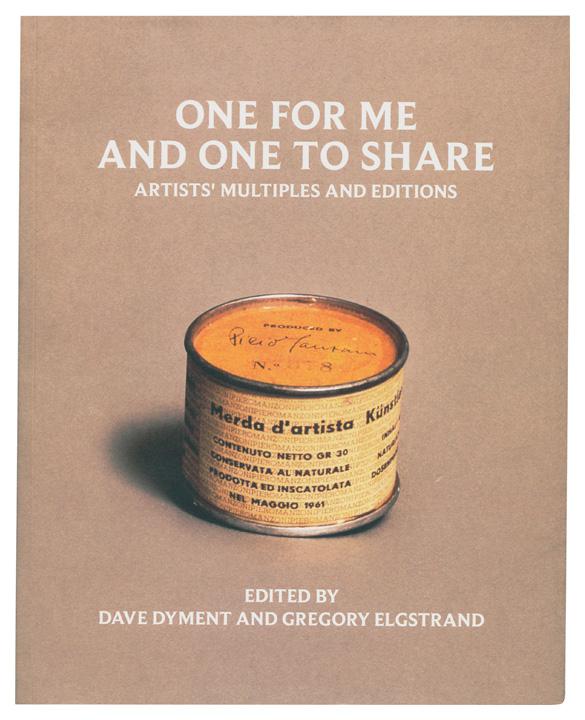Our year-end best-of lists are just around the corner—as are holiday book sales at many museums, galleries and artist-run centres. Here’s what Canadian Art‘s editors recommend right now for bookshelves from coast to coast.
THE ART BOOK, Phaidon Press, 592 pp, $59.95
Phaidon Press started its climb to the pinnacle of popular art-book publishing with The Art Book in 1994. Funky, colourful and convenient, the volume provided a palpable history of Western art in a visually minded tour de force that offered readers a canon of achievement just as the idea of the canon was under threat from art theory. The book’s runaway success was a reminder that people like a bit of discerning authority on the subject of art. The texts were rich enough to whet the appetite of newcomers and to satisfy those already in the know. The new 2012 edition continues the formula, and it’s not hard to see where the newness begins. The old “A” section started with Jacques-Laurent Agasse’s giraffe, Josef Albers’s yellow squares and Alessandro Algardi’s bust of a 17th-century cardinal. In 2012, you see Marina Abramović, Tomma Abts and Ansel Adams before The Nubian Giraffe shows up. Ai Weiwei appears opposite Albers. All in all, 100 new works have been added to the alphabetized survey, making this a truly 21st-century reference book on art. Christmas stockings will bulge.
VAN GOGH: UP CLOSE, Cornelia Homburg, Yale University Press, 306 pp, $60.00
Vincent van Gogh’s deep appreciation of the natural world affected his close-up views of still lifes and landscapes. In Van Gogh: Up Close, Cornelia Homburg highlights this often-overlooked aspect of the artist’s oeuvre, examining works from his productive French period. Produced to accompany a travelling National Gallery of Canada and Philadelphia Museum of Art show, the catalogue features five essays on topics such as the profound calm Van Gogh discovered in studying minute aspects of nature, and the influence of French and Japanese artists on his works’ unique perspectives. Homburg sheds new light on Van Gogh, affirming his position as a leading artist of his time.
ARTIFICIAL HELLS: PARTICIPATORY ART AND THE POLITICS OF SPECTATORSHIP, Claire Bishop, Verso, 390 pp, $29.95
In this study (whose arresting title derives from an André Breton essay), the art historian Claire Bishop expands on a 2006 Artforum article in which she scrutinized the “social turn” in contemporary art. Here, she presents a more comprehensive enquiry, tracing the century-long legacy of socially engaged art and analyzing recent participatory projects, from “La Monnaie Vivante” to Thomas Hirschhorn’s Bijlmer-Spinoza Festival. Throughout, Bishop shows that we tend to champion the ethics of such artist/audience collaborations, and encourages us to consider their aesthetic and political dimensions, too—the efficacy of their artifice and hellishness, as it were.
LYNNE COHEN: NOTHING IS HIDDEN, Lynne Cohen, Jenny Diksi, Ann Thomas et al., Steidl/Scotiabank, 172 pp, $63.00
This book is the first fruit of the Scotiabank Photography Award, a new honour that bestows a state-of-the-art Steidl publication in addition to a sizeable $50,000 prize on a deserving Canadian photographer. Lynne Cohen, the inaugural 2011 prizewinner, is certainly that. The Montreal-based photographer has been taking riveting, wry interior-location photos since the 1970s. Her empty rooms explore the states of mind that shape personal and corporate spaces. If there were a lifetime prize for alert observation, Cohen would win that, too.
ONE FOR ME AND ONE TO SHARE: ARTISTS’ MULTIPLES AND EDITIONS, edited by Dave Dyment and Gregory Elgstrand, YYZ Books, 204 pp, $34.95
There is a fundamental paradox to the story of artists’ multiples. Since the late 1950s, the production of free or modestly priced limited-edition artworks, ranging from postcards and records to doorknobs and excrement, has been seen as a bid to democratize artistic practices. At the same time, demand for these unique objects has often made them rarefied commodities with high-value cachet. That double-edged predicament forms the crux of this collection of essays and interviews, which offers varied takes on the key legacy of artists’ multiples: the circulation of ideas.
LEONARDO AND THE LAST SUPPER, Ross King, Bond Street Books, 432 pp, $34.95
Ross King is back in Italy! The year is 1494 and Leonardo da Vinci is in Milan toiling under the patronage of Ludovico Sforza. A wall painting is needed for the refectory hall of the Dominican church that serves as an honour site for the Sforza family. Leonardo, already in his 40s, has yet to produce “a work of fame” that matches his long-recognized promise. As in his earlier volumes on Filippo Brunelleschi and Michelangelo, King is matchless in setting the stage for the making of a masterpiece. The fresco seems to unfold in real time.
LOUISE BOURGEOIS: THE RETURN OF THE REPRESSED; PSYCHOANALYTIC WRITINGS, edited by Philip Larratt-Smith, Violette Editions, 500 pp, $76.34
In the replete pantheon of modernist headcases, Louise Bourgeois undoubtedly has a special place. The artist’s fraught relationships with her mother, father, colleagues and romantic partners are well known, and drove her brilliant work forward. They also took a mental and physical toll—so much so that, throughout her life, she sought out therapy, reading extensively on the subject (especially Freud) and writing on her own progressions and regressions whenever possible. This fascinating two-volume set puts her writings from 1952 to 1966, the most active period of her therapy, alongside her art, as well as several essays on the role of psychoanalysis in her practice.









